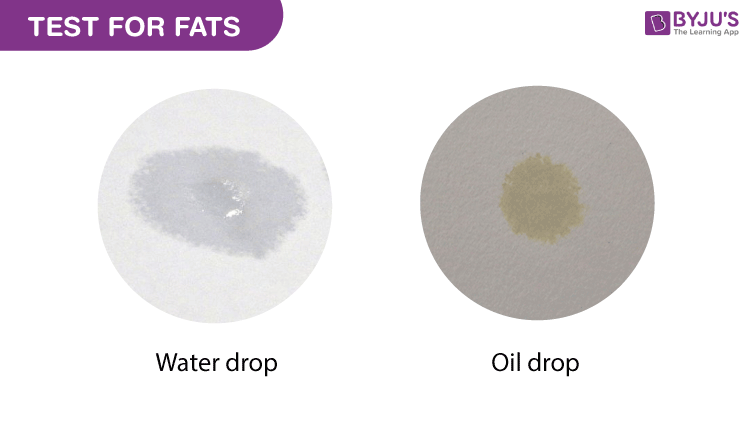Table of Contents
What Are Fats?
Fats are a fundamental part of our diet and are important for good health. They are the major source of energy and aids our body in absorbing fat-soluble vitamins.
There are different types of fats, with some fats being healthier and others dangerous. On average, a healthy person requires about 10 to 15 per cent of overall calories as fat. To maintain a healthy life, it is important to eat unsaturated fats in small amounts. If fats are taken in large amounts, including both saturated and unsaturated fats, it can lead to a weight gain in an individual which could be followed by several health disorders.
Fats are lipids. Fats are the oily substance found around the organs or below the skin and used as energy storage and also as a shock absorber.
Explore more about Difference Between Lipids And Fats
Types Of Fats
Fats are of different types and are mainly differentiated based on their sources- Plant and animals. These include:
Saturated Fats
They contribute to the bad cholesterol and are usually present in animal products such as milk, cheese, meat etc hence should be consumed in limited quantity. Saturated fats are substituted by unsaturated fats to lower cholesterol levels. Trans fatty acids play a similar role. Consumption of saturated fat in abundance is the most common reason for heart diseases.
Polyunsaturated Fats
They are simply fat molecules found both in both animals and plant-based foods. They are healthy fats. Examples – Omega-3 fatty acids, Omega-6 fats. They aid in muscle functioning and supporting the functioning of a healthy brain.
Monounsaturated Fats
They are healthy fats usually found in peanuts, olives and its oil, Avocados etc and enables smooth functioning of the heart and aids insulin sensitivity, storage of fat, weight loss and helps in maintaining high energy levels.
Trans Fats
They are also referred to as trans-fatty acids or unsaturated fatty acids and are naturally found in food derivates obtained from cattle such as milk, cream, cheese, lamb, beef etc. One beneficial and natural trans fatty acid is the conjugated linoleic acid that aids in strengthening the immune system and checks the growth of cancer cells. Conversion of liquid oils into solid fats yields trans fats. They are found in processed food products such as snack foods, cookies, deep-fried foods etc.
Good Fats v/s Bad Fats
- Saturated and trans fats are harmful to human health.
- Saturated fats lead to an increase in blood cholesterol and are low-density lipoprotein levels.
- Saturated fats should be eaten rarely and are found in animal products such as meat, beef, pork, fatty fish, etc.
- Some of the best sources of fats are found in butter, yoghurt, cheeses, margarine, pastries, ribs, bacon, pork, etc.
- Trans fats are the worst type of fats and should be completely avoided. Such fats are found in fried foods, cakes, pastries, etc. These can also suppress the good cholesterol levels.
- On the contrary monosaturated and polyunsaturated fats are healthier. Foods such as nuts, vegetable oils, peanuts, avocado, almonds, peanut butter, etc contain good fats and heart-healthy.
Also, refer to Difference Between Saturated And Unsaturated Fats
Test For Fats
There are different methods used for testing the presence of fats in the given food samples.
Here let us perform a simple and easy experiment with the help of a filter paper called the Paper Spot Test.
Experiment
Aim
To carry out appropriate and simple tests to detect the presence of fats in the given food sample.

Materials Required
- Filter paper.
- Sunlight or any other source of light.
- Food sample – Oil, Butter, Cheese, deep-fried potato chips etc.
Procedure
- Select the food sample for which you need to test for fats.
- In a filter paper, take a small quantity of the food.
- If the food sample is liquid-like butter, oil, and cheese, gently spread it and if you are using potato chips, then crush it and wrap the paper slowly. Make sure paper is not damaged.
- Leave the experiment undisturbed for 3 to 5 min aside.
- Now straighten the paper and allow it to complete either by keeping it in sunlight or near the open window.
- Now observe for the changes on the paper.
Observations
We can observe an oily patch on the paper, which indicates the presence of fats in the given food sample. This experiment is called the Paper Spot Test.
Result
The result is positive.
According to the observation, the presence of fats in the given food sample is indicated by the oily patch on the paper. The filter paper observes the oil from the food sample and becomes translucent. This was a simple experiment which is used to check for the presence of fats in the given food sample. This paper spot test for fats can be performed for different sources of food and can maintain a healthy life.
Also Refer: Fats
Stay tuned with BYJU’S to learn more about the test for fats and other related topics at BYJU’S Biology

Helpful